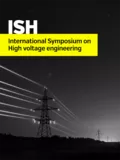Summary
Recently reports are mainly focused on elements doping in CaCu3Ti4O12 or one kind of ACu3Ti4O12 whereas composites of CaCu3Ti4O12 and ACu3Ti4O12 are rarely studied. Two kinds of perovskite structures and interfaces between them could affect dielectric properties, leading to possible novel dielectric phenomena. In this work, xBi2/3Cu3Ti4O12/(1-x)CaCu3Ti4O12 ceramics(x=20 mol%, 40 mol%, 60 mol%, 80 mol%) are prepared by traditional solid-state reaction method. Extremely high nonlinear coefficient of 25 and breakdown field of 18.92 kV·cm-1 are obtained in small current range of 0.1- 1mA when x is 40 mol%, which is supposed to be a potential candidate for over-voltage protection. Results of X-ray diffraction show that only one main phase of CaCu3Ti4O12 is found, with separation of the (220) peak at high x values and lattice parameter reducing when x increases. Images from Scanning Electron Microscope demonstrate that large and uniform grains with dense structure are obtained, indicating that addition of bismuth assists in grain growth in lower sintering temperature. Energy Dispersive Spectroscopy confirms CuO aggregation intergranularly and two perovskite structures intragranularly, which contain the structure of bismuth substitutes for calcium at A-position to the solid solubility limit and not to the solid solubility limit. Results of impedance spectra illustrate that nonlinear coefficients and breakdown fields are first elevating before x reaches 40 mol% and then decreasing when x exceeds 40 mol%. The same trend is found in the variation of grain boundary resistance calculated by equivalent circuit consisting of grain and grain boundary elements. The decline of Rgb and Egb is supposed to result from the increased intergranular phase of CuO, which is already proved to be semiconductive. Activation energy of grain boundary when x is 40mol% is calculated as high as 1.19/1.17 eV and the activation energy when x is 80mol% sharply drops to 0.51 eV, variation of which follows the trend of nonlinear coefficient as well. It is proposed that the enhanced nonlinear characteristics originate from elevated Schottky barrier height due to increased grain boundary interface state between two heterogeneous perovskite structures, which could be deduced from analysis of microstructure and impedance spectra. It is proposed that the enhanced nonlinear characteristics originate from elevated Schottky barrier height due to increased grain boundary interface state between two heterogeneous perovskite structures, which could be deduced from analysis of microstructure and impedance spectra.
Additional informations
| Publication type | ISH Collection |
|---|---|
| Reference | ISH2017_191 |
| Publication year | |
| Publisher | ISH |
| File size | 754 KB |
| Pages number | 6 |
| Price for non member | Free |
| Price for member | Free |
Authors
Y. HUANG, K. WU, J. Li



